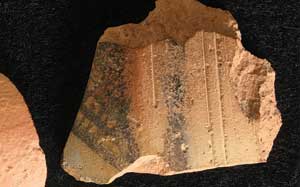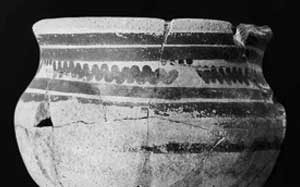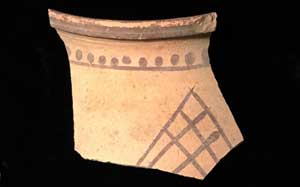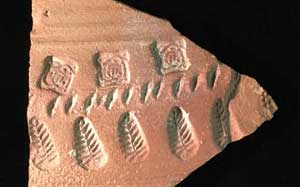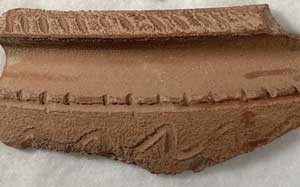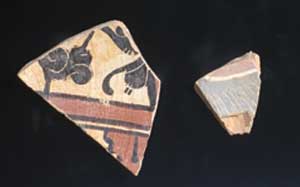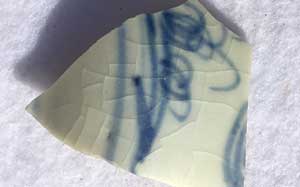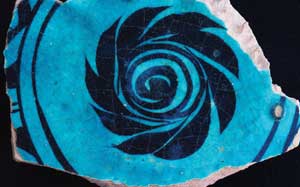Ceramics
In areas where fired ceramics are regularly made and used, like Afghanistan, ceramic styles are regularly used by archaeologists to date sites, ascribe function and use, and assess the technological level of the ancient occupants. Pottery is so common an artifact in ancient sites that understanding the ceramics of a site, a region, a culture, has become a key specialty amongst archaeologists. Pottery is ubiquitous in Sistan beginning in the Bronze Age and for every subsequent period. The chronological ceramic sequence in Afghan Sistan had not been established prior to our work due to the brevity of previous missions. We can only begin to create such a sequence, some features of which are shared here. More analysis by other scholars comparing our finds to other sites in Iranian Sistan and further afield will be necessary to fit our ceramic sequence into the bigger picture.
Bronze Age
A 50-year-long excavation project in Iranian Sistan has made identifying our Bronze Age ceramics much simpler. Shahr-i Sokhta, “The Burnt City,” is an UNESCO World Heritage site dating to the 3rd millennium BCE and has…
Early Iron Age
One of the most significant finds by the Helmand Sistan Project was a previously unknown culture dating to about 1000 BCE, the Early Iron Age in Central Asia, a time period in which previous researchers…
Achaemenid and Hellenistic
While there are numerous sites from the Achaemenid and Hellenistic periods in Iranian Sistan, very little from these time periods was found by our project. The sole exception was from our excavation at Lat Qala, where…
Parthian
The Parthian period (200 BCE - 225 CE) represented the apogee of population in Afghan Sistan. Because of the length of time and density of population, our collection of ceramics from these periods is enormous.…
Sasanian
The Sasanian period (225 - 650 CE) was another of the most densely populated points of occupation in Sistan. There is a great deal of continuity of the material culture with the preceding Parthian period.…
Saffarid and Ghaznavid
We have numerous glazed sherd collections from the Saffarid (9th to 10th centuries CE) and Ghaznavid (11th century) periods, many styles of which overlap. While stylistically very different from the pre-Islamic styles, they generally are…
Ghorid
Ceramics from the 12th and 13th century are found at many sites in Sistan but are often similar to those from the preceding and succeeding periods. The most distinctive marker of ceramics from this century…
Timurid
The last extensive occupation of Sistan took place in the century after Tamerlane is known to have conquered the region (late 14th to 15th century CE). Rather than devastation, as is recorded in historical texts,…



